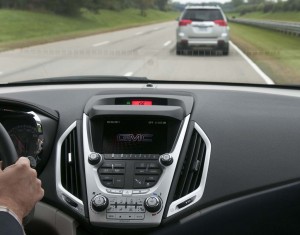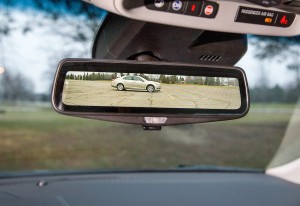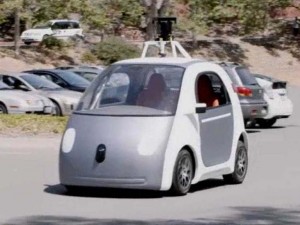Today’s new cars are likely to feature more digital technology than you’ll find in the typical home or office – including infotainment systems that can tap into the apps on an Apple or Google smartphone.
But forget about Android Auto or Apple CarPlay. What consumers want most are safety-related technologies such as blind spot detection and forward-collision mitigation – which account for seven of the Top 10 technologies car buyers say they want most, according to the first J.D. Power U.S. Tech Choice Study. Among the Top Five picks, self-healing paint was the only non-safety-related technology.
“Collision protection ranked above average,” said study director Kristin Kolodge, with “the vast majority” of the more than 5,000 U.S. motorists who participated in the Tech Choice Study. Significantly, she said this was not limited to any narrow segment of buyer. “There is a tremendous interest in collision protection technologies across all generations.”
The study looked at 59 individual technologies that are just beginning to appear on the market or which are expected to become available in the near-future. They fell into five different categories, including Collision Protection, Comfort & Convenience, Entertainment & Connectivity, Driving Assistance, Energy Efficiency and Navigation.
(Forget car-sharing. Most Americans happy to keep driving, says new report. Click Here for details.)
At the top of the list, the five most preferred technologies were:
- Blind Spot Detection and Prevention, named a top pick by 40% of those surveyed;
- Night Vision, chosen by 33%;
- Enhanced Collision Mitigation, 30%;
- Camera-Based Rearview Mirror, also chosen by 30%; and
- Self-Healing Paint, 25%.
The study found strong – if harshly divided – interest in autonomous vehicle technologies overall. It was ranked as a top pick by almost every group, including both Boomers and Millennials. But, on the whole, respondents said they want fully autonomous vehicles, not those that just can manage to operate independently under limited circumstances.
(Autonomous vehicles are coming, like it or not, proclaims Google’s tech chief. Click Here for more.)
On the whole, technologies designed to enhanced fuel efficiency scored lowest with consumers, noted Kolodge, something that may have been influenced by the sharp drop in fuel prices.
The survey respondents also showed little interest in technology that would allow them to access e-mail while driving, make it easier to tow a trailer, and which could monitor their health while driving.
One surprise was the relatively poor scores for the Apple CarPlay and Google Android Auto systems which are designed to allow a motorist to operate smartphone apps from a vehicle’s touchscreen, rather than having to reach for the phone itself.
But the results may be a bit misleading, cautioned Power researchers. They found that smartphone users are extremely brand and platform loyal so, Android phone users had no interest in a car that could integrate Apple iPhone apps – and vice versa.
Taking that into account, demand for smartphone integration is actually quite strong – and might require manufacturers to offer both Apple and Google Android capabilities or risk alienating some potential buyers.
“I can’t think of any other physical possession that would help determine which brand of car a person would buy,” said Power Vice President David Sargent during a presentation of the new study at a meeting of the Detroit Automotive Press Association.
Significantly, buyers across the age spectrum appear willing to pay for new technologies, but what some have dubbed “Generation Smartphone” seem most willing to pay whatever it takes to get the tech they want. That averaged out to an estimated $3,703 a vehicle for Millennials compared to just $2,416 for Boomers.
Many of the technologies included in the first U.S. Tech Choice Study didn’t even exist a few years ago except, perhaps, on the pages of a science fiction novel. Project chief Kolodge acknowledged a lack of familiarity might have influenced what features were picked or panned. But that’s the reality, she said, considering, “The pace of change…is unlike anything we’ve seen in the past.”
(Drone delivery? Car shoppers look to the future. Click Here for more.)




With how poorly most people drive and the increase danger on the roadways, it’s not surprising people want to be able to survive a crash and minimize the personal injury. I think this increased interest is due to the fact so many people are driving like crazed drug addicts – because many are.
Perhaps some drivers desire to be spared from themselves?